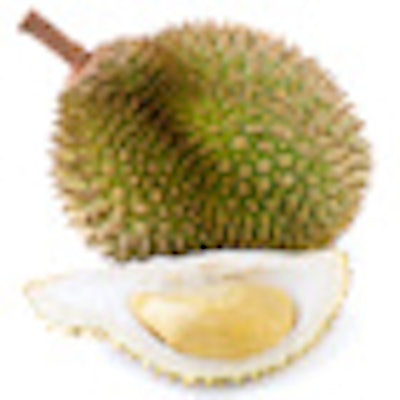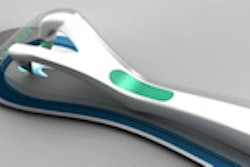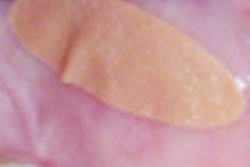
Student researchers from Thailand are exploring the potential for a new kind of oral healthcare product gleaned from the spiky husk of the durian, a pungent, popular fruit in Southeast Asia.
In a study conducted by Faculty of Dentistry students at the University of Chulalongkorn in Bangkok and presented at the recent ADA annual session in Las Vegas, a mouth rinse made with durian polysaccharide gel (DPG) gleaned from durian fruit reduced the presence of Streptococcus mutans as effectively as 0.2% chlorhexidine in the first and third hour after use.
It also reduced bad breath and proved to be nontoxic after 21 days of testing on lab rats, the researchers noted.
Thailand is a major consumer and exporter of durian, which is notorious for being banned in some hotels and public transportation due to its pungent odor.
In this study, the researchers tested the feasibility of using DPG as an alternative to chlorhexidine and alcohol mouth rinse solutions.
"These chemical substances can cause irritation and allergy when used over a long period," they noted.
The researchers also tested the toxicity of the mouth rinse and its ability to reduce S. mutans in saliva.
"Our study was to find whether polysaccharide gel could be used as an active ingredient and [be] commercially developed into oral healthcare products to prevent dental caries and oral malodor," the researchers stated.
3-phase study
During the toxicity testing portion of the study, conducted over a 21-day period, 30 rats were divided into three groups of 10. Using a cotton swab, group 1 received 1 mL of water, group 2 got the DPG mouth rinse, and group 3 received an herbal mouth rinse.
Saliva from human subjects was the focus of the next phase of the study. To measure the reduction of S. mutans, 105 human subjects who had not brushed or eaten on the morning of the experiment were divided into three groups of 35. Group 1 received the DPG mouth rinse, group 2 got saline, and group 3 received chlorhexidine.
Next, a rinse was performed for one minute, and saliva was collected after one hour and three hours. Each group rinsed twice a day for a one-week period, and saliva collection was taken at the end of the period. The saliva that had been collected was diluted to a scale of 1:1,000 and incubated.
To measure the impact of the DPG mouth rinse on oral malodor, the researchers used three volatile sulfur compounds: hydrogen sulfide, methyl mercaptan, and dimethyl sulfide, which were measured using oral chroma. This phase of the study included 30 human subjects.
After a baseline measurement of sulfur compounds was taken, the subjects rinsed with DPG mouth rinse for one minute, and the compounds were measured again an hour later. The study participants then rinsed twice daily for one week, and the compounds were again measured. This process was repeated with saline solution for the control group and chlorhexidine for the third group.
No toxicity
The researchers found no evidence of treatment-related gross toxicity, nor did any of the rats die after 21 days of exposure to DPG mouth rinse. In addition, they found no pathological change in samples taken from buccal mucosa, lips, and tongue.
The researchers found no evidence of pathological change either with histological analysis of the oral mucous membrane. "Neither toxicity nor allergic reaction of oral tissues or internal organs was detected in the experimental animals treated with DPG mouth rinse for 21 days," the researchers noted.
The DPG mouth rinse successfully reduced S. mutans in each time frame, they added. In fact, it had the same effectiveness as the 0.2% chlorhexidine in the first and third hour. However, at one week DPG had 52% S. mutans relative to baseline, while the 0.2% chlorhexidine had 17%.
Oral malodor was also reduced by the DPG mouth rinse, although not as effectively as the 0.2% chlorhexidine mouth rinse, the researchers concluded.



















